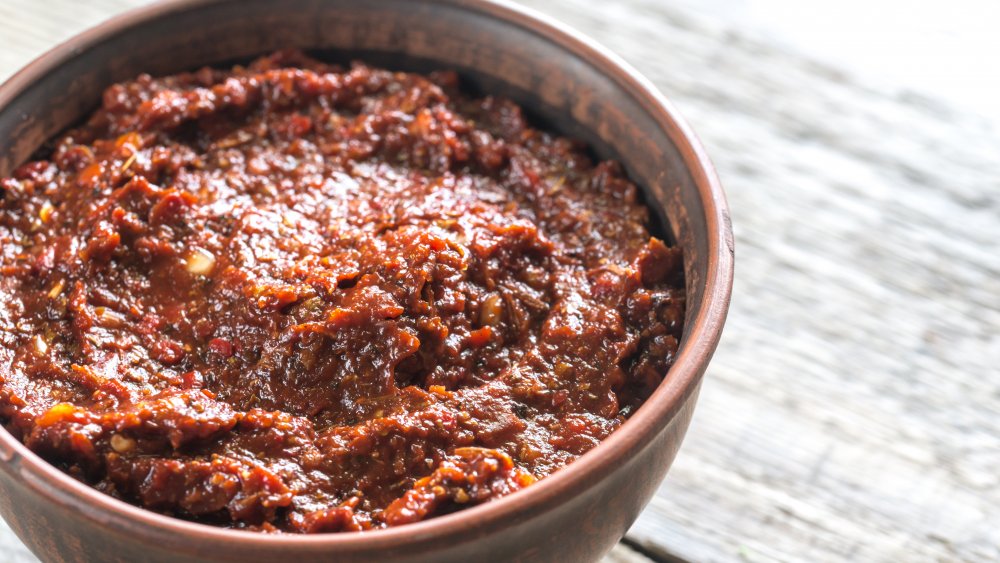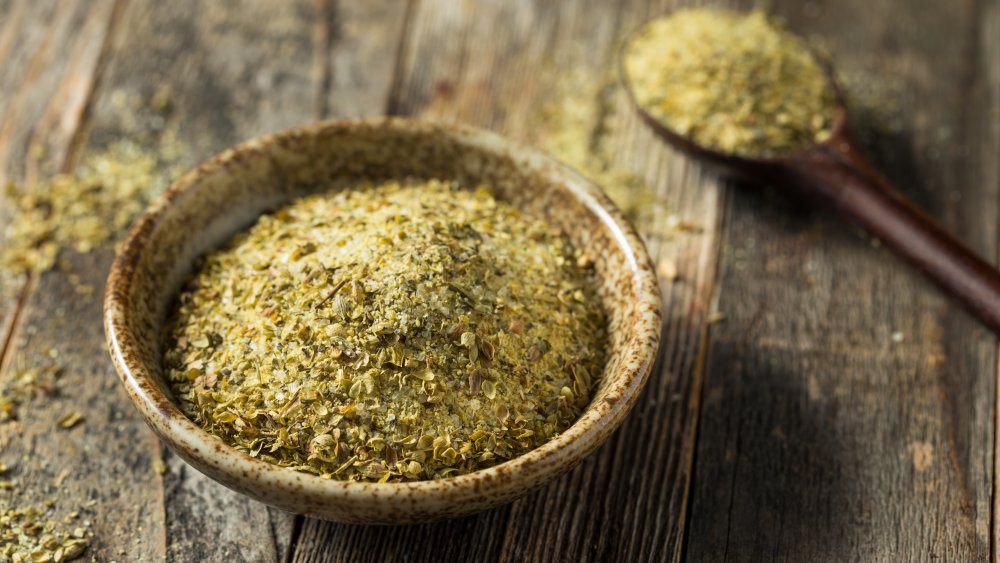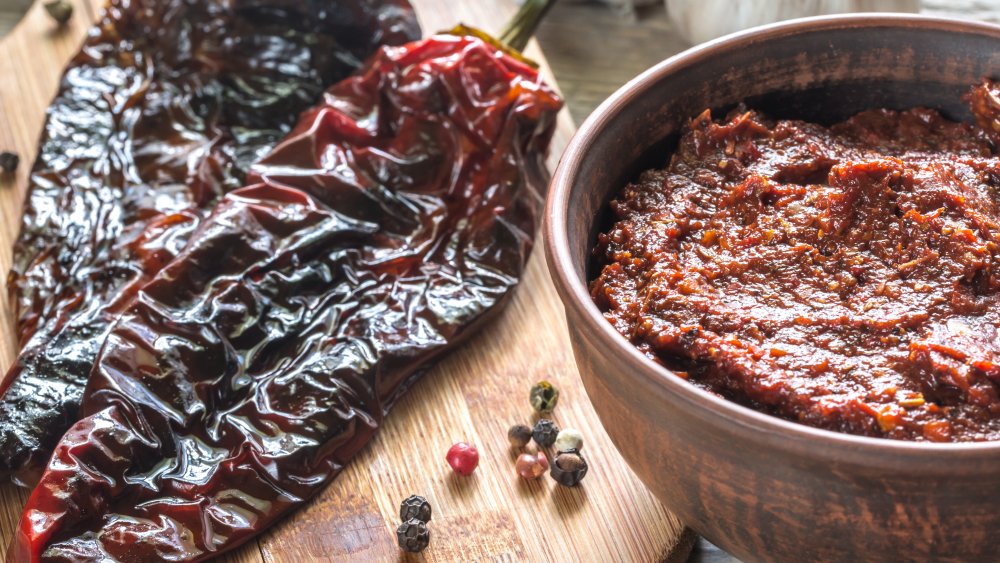The Untold Truth Of Adobo Seasoning
If you grew up in the Philippines or in Latin America (or claim heritage from either of these places), you probably have a body built on adobo. It has most likely been your family's go-to seasoning for as long as anyone can remember, one that pairs perfectly with any kind of meat (or veggies, if that's what tickles your pickle). As the popularity of Latin-based meals — and in turn the common use of adobo — made its way to the masses, food-enthusiasts everywhere began picking up on the potency of this humble little seasoning.
But as most things go when they are introduced to the general public, the origins tend to get lost. Latinos claim it to be theirs. Filipinos claim it to be theirs. The Spanish claim it to be theirs (the word adobo does have Spanish roots). It is clear that the origins of this delicious seasoning — used in everything from tacos to BBQ — have been long disputed. According to The New York Times, food journalist and historian Raymond Sokolov has stated that despite it being present in other parts of the world, adobo was also present in the Philippines long before Ferdinand Magellan set foot there. With Sokolov's backing, the Philippines cements its lead in the race to claim the highly contested crown on this delicious invention.
Latin American adobo likens to Memphis-style BBQ
When it comes to how adobo will be made, it all depends on the person who is cooking and what their personal preferences are. Like many other seasonings, adobo is what you make it to be. So if a dry rub is your golden goose, adobo's definitely got your back. Something to keep in mind when making your own (or buying it at a store), is what corner of the adobo-making world you're craving. According to My Recipes, the Caribbean focuses on a version that is a fragrant mix of dry herbs.
What can you expect in a Dominican or Puerto Rican adobo? This dry adobo normally carries garlic powder, onion powder, oregano, salt, pepper, and the occasional dried citrus. Dry rubs are especially great for pork ribs, chicken, and brisket, so a dry adobo would be no different. This iteration of adobo will taste more herbal in comparison to its counterparts from across the world.
Filipino and Spanish-style adobo likens to Carolina-style BBQ
Now, if you're looking to channel the Filipino version of adobo, you're going to be looking at a style of adobo with a bit more movement. In the Philippines, their version of adobo will look more like a marinade as they incorporate a few wet ingredients. What do Filipinos use to make adobo? They use a mixture of vinegar (anything ranging from coconut vinegar to cane vinegar to nipa palm vinegar to kaong palm vinegar — all common within their cuisine), soy sauce, garlic, peppercorns, and bay leaves. Adobo is even considered the unofficial national dish of the Philippines, according to Eat Your World. Since this marinade uses a vinegar base, it will taste slightly more acidic, just like Carolina-style BBQ.
If you jump over to Spain, and you'll get a vibrant red adobo sauce that's equally swoon-worthy (via My Recipes). Like in the Philippines, Spain's take has a vinegar base and is mixed with salt, garlic, oregano, and lots of paprika (this is what gives the seasoning its bright red color).
One thing's for sure: No matter what kind of adobo you try, it's going to be delicious.


